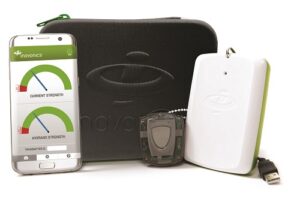Why Investing in Wireless Is Worthwhile
Wireless security advantages include faster installation, lower costs, less site disruption and use when hardwire isn’t feasible. Here’s how its legacy limitations are being overcome.

While it’s true that technology has created some moderately impressive, simple wireless alarm systems, the question still remains: Does the wireless device provide the same level of security as hardwiring? Image: yingyaipumi/stock.adobe.com.
Go where the pros go. Today, we see a large surge in the DIY market for wireless alarm systems and sensors. Suddenly, it’s anyone’s game to self-install one of those wireless alarm systems, many having no clue of what actually comprises it. The public in general thinks the concept of wireless alarm systems is something new, oblivious that the professional security industry has been developing and installing them for almost 50 years.
It is true that technology has created some moderately impressive, simple wireless alarm systems. They are economical for sure. But would you trust your life or your family’s lives and property to their questionable performance? With the emergence of the DIY alarm market at least one interesting market has evolved. It is DIFM (do it for me), as many DIYers have high self-installation expectations but poor results.
Wireless alarm systems and accompanying sensors have always been a tease for the professional alarm dealer. Especially in retrofit installations, it is always easier to mount a sensor and transmitter in minutes rather than taking hours to hardwire the same device. The question still remains, does the wireless device provide the same level of security as hardwiring? Let’s take a closer look at where this market is today.
Weighing Wireless Wares
One wireless security products company that has performed well for security professionals is Inovonics. For more than 30 years, this manufacturer has provided professional-grade wireless security devices for every application level, be it residential or large office buildings. The devices are either UL Listed or UL Certified, meeting life-safety requirements for systems such as smoke detection. Transmission ranges can be from 25,000 to 40,000 square feet for long-range devices. Flexibility and security in radio transmission is accomplished by using frequency-hopping spread spectrum in the 902MHz to 928MHz range. The 900MHz range is a good frequency for maximum penetration of building structures.
Most of today’s wireless security systems only offer basic sensors such as motion detection, window/door opening, glass-break, panic button and smoke detection. However, one of the most important tools in a dealer’s toolbox is a universal wireless sensor, such as Inovonics’ Universal Transmitter (EN1210-60). This sensor will take the hardwired input from any of the many NO/NC devices the security industry has developed through the years. These might include the Alarmed Window Bar or Omni-Directional Tilt Sensor from George Risk Industries (GRTI). Other connected sensors might be the pull-apart or recessed contacts from Flair Electronics.
All sensor transmissions have their limitations as far as distance to alarm control panel. Building construction can reduce a transmitter from getting through to the alarm receiver. The use of a survey kit, such as the Inovonics EN7017 Survey Kit and App, can drastically reduce errors in specifying system components on a large wireless system proposal.
In any security system supervision of devices is important. This is especially true of wireless devices. Early dated wireless sensors, unfortunately, were unsupervised. A transmitter could go dead by battery power or even be removed, and no one would know. Many of today’s wireless sensors have some sort of supervision. In the case of the Inovonics’ EchoStream, devices typically check in every few minutes. This is particularly important criteria for fire/life-safety transmitters and to meet stringent UL Listings.

A survey kit, such as Inovonics’ EN7017 Survey Kit and App, can drastically reduce errors in specifying system components on a large wireless system proposal.
Another example of a professional wireless system with good secure supervised transmission is from ELK Systems. The M1 Gold Two-Way Wireless system or standalone transceiver module provides two-way communications with frequency hopping and jamming detection sensors. A system with two-way communications allows the sensors and controls to quickly acknowledge to the sensor the status of the system.
As an example, this would allow a customer to see the armed status of their system on a handheld alarm control key fob. Two-way transmission would also save battery power by only needing one signal acknowledgment for a wireless sensor versus many one-way systems that use several repeated signals in the hope that one signal received the status.
One the biggest challenges of installing perimeter security is the need to bury the connecting cables. Companies like OPTEX have wireless solutions to save time and money by not having to trench. Using the wireless Inovonics components and either battery or sometimes solar power these perimeter units are a great replacement for wired systems.
One handy wireless unit for close building perimeter protection is the BX-80NR. This device has multiple detection channels to help reduce false alarm activation. It works very nicely on outer building walls. Additionally, the AX-200TFRi is a wireless 200-foot photobeam detector with a built-in, you guessed it, Inovonics EN1941 transmitter. Finally, OPTEX has a very popular PIR line called the REDWALL that also has wireless models.
To Infinity & Beyond!
The challenges with wireless security devices are to make them function on low and long-lasting power, have supervision signals, include anti-hacking features such as frequency hopping and/or encryption, and span the longest wireless distance possible.
With the large increase in IoT devices and communication standards such as Z-Wave, you had only two choices; either add more repeaters or more devices to their mesh network. Realizing the need for more range, the Z-Wave Alliance recently released the Z-Wave Long Range (Z-Wave LR) specification with connectivity beyond the boundaries of the home. This accelerates the adoption of Z-Wave in other verticals such as light commercial, hospitality and multidwelling units (MDU).
Z-Wave Long Range adds an extra 100kbps direct sequence spreading spectrum (DSSS) Offset Quadrature Phase Shift Keying (OQPSK) modulation to the Z-Wave protocol. Future transmission distances up to several miles are expected.
New applications of wireless transmission technologies are emerging all the time. For instance, a customer requested to have their rural mailbox monitored to know when mail was delivered. At first, this seemed like a simple wireless transmitter task. The best location for the transmitter was inside the metal mailbox; however, a problem arose. Due to long distance to the mailbox and the signal attenuation from the metal mailbox, the signal could not be received reliably. A solution was discovered with a new wireless technology.
Defined as Long Range (LoRa), this technology was developed and patented by Grenoble, France-based Cycleo, and later acquired by SemTech. LoRa’s communications technique is based on a unique spread-spectrum modulation derived from Chip Spread Spectrum (CSS) technology. Additionally, LoRaWAN, an official ITU-T.4480 (International Telecommunication Union) standard, defines the communications protocol and system architecture.

New applications of wireless transmission technologies are emerging all the time. Image: andreypopov/stock.adobe.com.
Ongoing development of the LoRaWAN protocol is managed by the open, nonprofit LoRa Alliance, of which SemTech is a founding member. Together, LoRa and LoRaWAN define a Low Power, Wide Area (LPWA) networking protocol designed to wirelessly connect battery-operated devices to the Internet in regional, national or global networks. This protocol targets key IoT requirements such as bi-directional communication, end-to-end security, mobility and localization services.
While it has taken some time for this technology to emerge among dealers, companies like Irvine, Calif.-based YoLink (a division of YoSmart) now utilize LoRa. How far can someone go with LoRaWAN techniques? Devices like the Abeeway Industrial Tracker can track devices worldwide. This highly versatile multimode tracker has a large battery and embedded sensors combining GPS, low-power GPS, WiFi sniffer, Bluetooth Low Energy (BLE), and LoRaWAN TDoA geolocation technologies that support accurate outdoor and indoor geolocation.
To pull this all together, services from a company like ThingPark are utilized. Its multitechnology, open, hardware-agnostic IoT platform allows deployment of Low Power Wide Area Networks (LPWAN) worldwide. It not only integrates an advanced LoRaWAN network server, but also low-power cellular (LTE-M, NB-IoT) and satellite radio networks.
As you can see, communication technologies like LoRa can be used to monitor anything, anywhere on the globe.
If you enjoyed this article and want to receive more valuable industry content like this, click here to sign up for our FREE digital newsletters!

Security Is Our Business, Too
For professionals who recommend, buy and install all types of electronic security equipment, a free subscription to Commercial Integrator + Security Sales & Integration is like having a consultant on call. You’ll find an ideal balance of technology and business coverage, with installation tips and techniques for products and updates on how to add to your bottom line.
A FREE subscription to the top resource for security and integration industry will prove to be invaluable.








